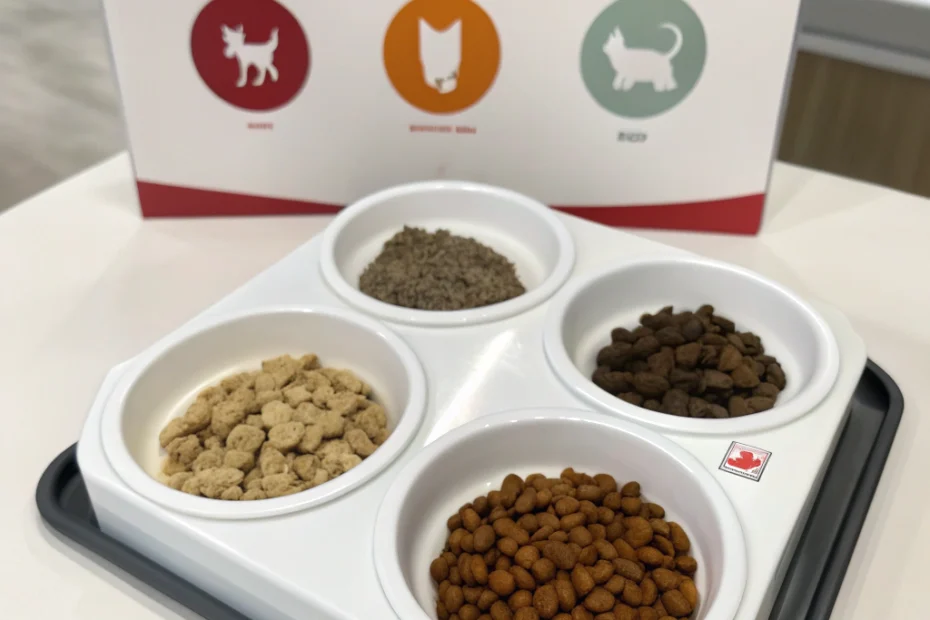At-a-Glance
If your cat frequently vomits, it can be a distressing experience for both you and your feline friend. Understanding the potential causes and finding the right cat food for cats that puke may help alleviate this issue. While occasional vomiting can be normal, frequent episodes might indicate a dietary or health concern. This guide provides insights into selecting appropriate food, ensuring safety, and creating a supportive environment for your cat.
How to Choose
Choosing the right cat food for a cat that tends to puke involves considering several factors. First, look for foods that are formulated to be gentle on the stomach. These foods often contain easily digestible ingredients and limited additives. Additionally, consider the protein source; some cats may have sensitivities to certain proteins like beef or chicken. Opting for novel proteins such as duck or rabbit might be beneficial.
Ingredients to Consider
- Easily Digestible Proteins: Look for foods with proteins that are known to be gentle on the stomach.
- Limited Ingredients: Foods with fewer ingredients can reduce the chance of triggering a reaction.
- Fiber Content: Adequate fiber can support digestion and may help reduce vomiting.
- Moisture Content: Wet foods can provide additional hydration, which is beneficial for digestion.
Consult with Your Veterinarian
Before making any significant changes to your cat’s diet, it’s wise to consult with your veterinarian. They can provide guidance tailored to your cat’s specific needs and help rule out any underlying health issues.
Safety & Setup
When introducing new cat food, safety and setup are crucial. Gradually transition to the new food over a period of 7–10 days. Start by mixing a small amount of the new food with the old, gradually increasing the proportion of new food. This slow transition can help prevent digestive upset.
Monitoring Your Cat
- Observe Eating Habits: Keep an eye on how your cat reacts to the new food. Any signs of distress or continued vomiting should be noted.
- Check for Allergies: Be vigilant for any signs of allergies, such as itching or gastrointestinal distress.
- Maintain Fresh Water: Ensure your cat has access to fresh water at all times to support digestion.
Core Pillars
Understanding the core pillars of cat nutrition can help you make informed decisions. Cats are obligate carnivores, meaning their diet should primarily consist of meat. Ensuring your cat’s food meets their nutritional needs is essential for their overall health and well-being.
Essential Nutrients
- Protein: A high-quality protein source is crucial for maintaining muscle mass and overall health.
- Taurine: An essential amino acid that supports heart and eye health.
- Fat: Provides energy and supports skin and coat health.
- Vitamins and Minerals: Ensure the food is fortified with necessary vitamins and minerals for balanced nutrition.
Placement & Environment Tips
The environment where your cat eats can also impact their digestion. Ensure the feeding area is calm and free from stressors. Cats are sensitive creatures, and a peaceful environment can support better eating habits.
Feeding Environment
- Quiet Space: Choose a quiet area away from household traffic to place your cat’s food bowl.
- Elevated Bowls: Consider using elevated bowls to help reduce the risk of vomiting by promoting better posture during eating.
- Separate Feeding Areas: If you have multiple cats, provide separate feeding areas to prevent competition and stress.
Comparison with Alternatives
When considering cat food for cats that puke, it’s helpful to compare different types of food. Dry food, wet food, and raw diets each have their pros and cons. Wet food can offer more moisture, which is beneficial for digestion, while dry food can be more convenient. Raw diets are another alternative, but they require careful handling and preparation.
Pros and Cons
- Dry Food: Convenient and long-lasting, but may lack moisture.
- Wet Food: Provides hydration and is often more palatable, but can be more expensive.
- Raw Diets: Mimics natural diets but requires careful preparation to ensure safety.
FAQs
Why does my cat vomit after eating? There are several reasons a cat might vomit after eating, including eating too quickly, food intolerances, or underlying health issues. Consulting with a veterinarian can help identify the cause.
Can changing my cat’s food help reduce vomiting? Yes, changing to a food that is easier to digest or has different ingredients may help reduce vomiting. Always transition slowly to avoid further digestive upset.
Should I be concerned if my cat vomits occasionally? Occasional vomiting can be normal, but frequent vomiting should be discussed with a veterinarian to rule out any health concerns.
What to Do Next
After understanding the factors involved in choosing the right cat food for cats that puke, the next step is to observe your cat’s behavior and consult with your veterinarian. They can provide personalized advice and help you select a diet that may support your cat’s health. Remember, each cat is unique, and what works for one may not work for another.
Disclaimer: Always consult your veterinarian for personalized advice regarding your cat’s health.
